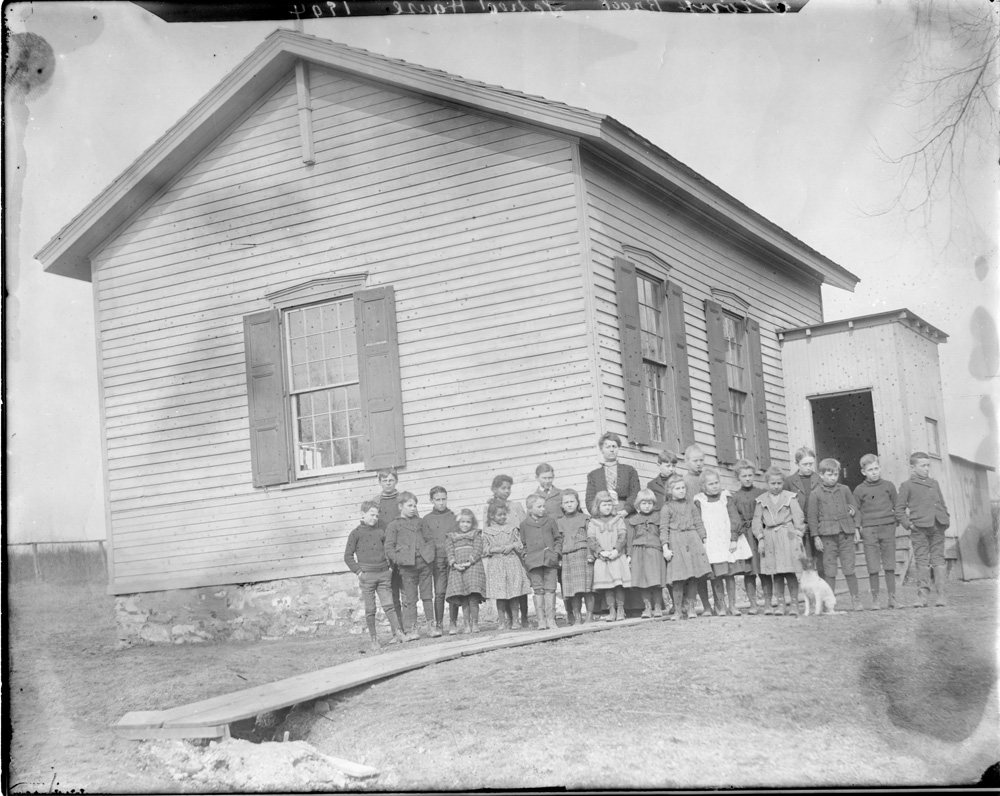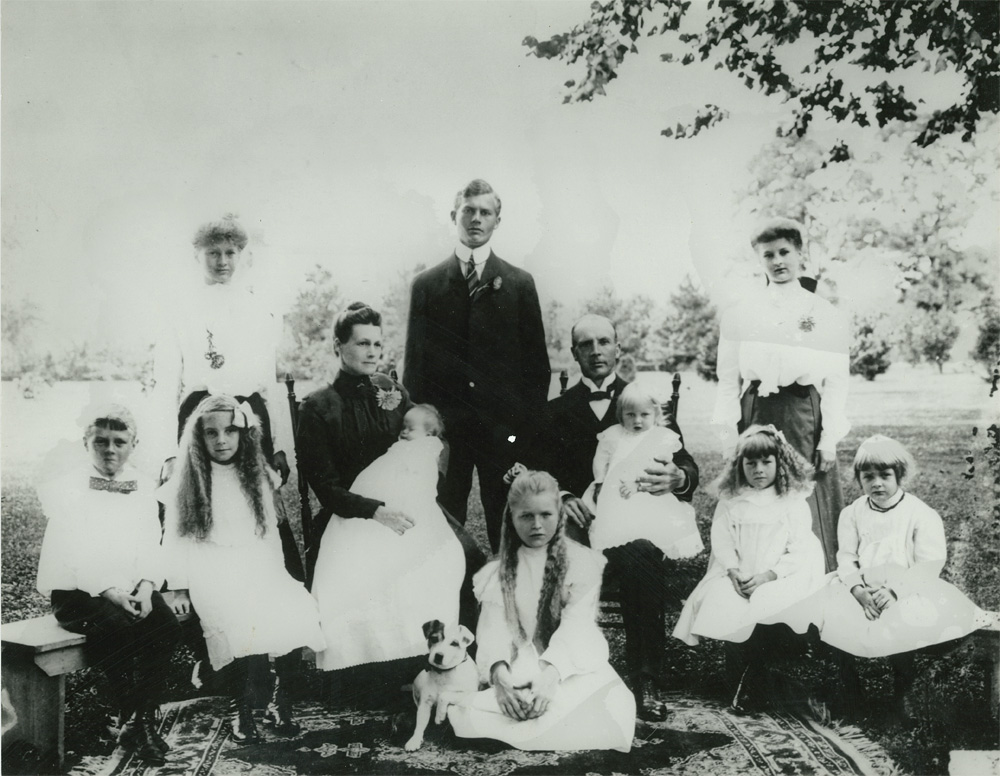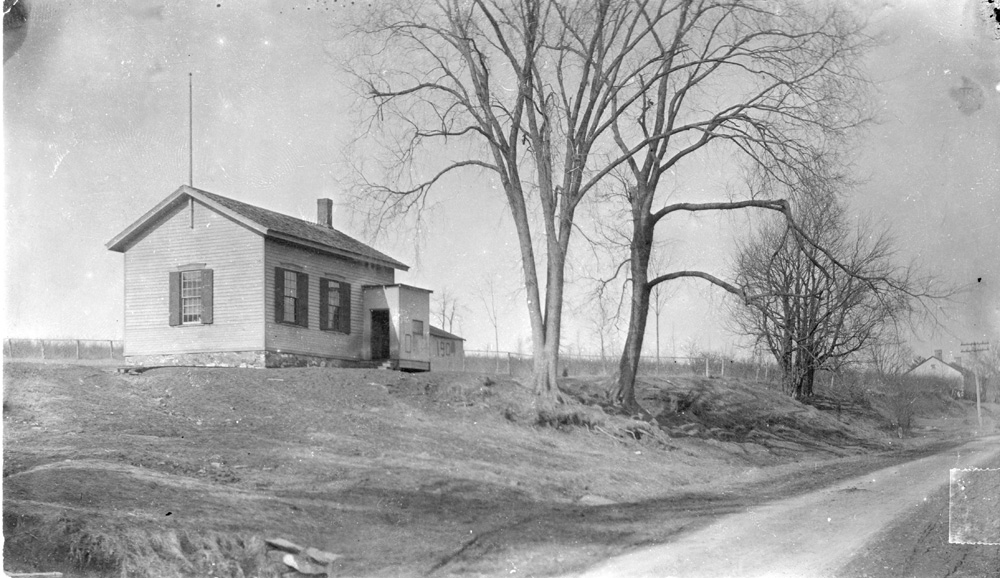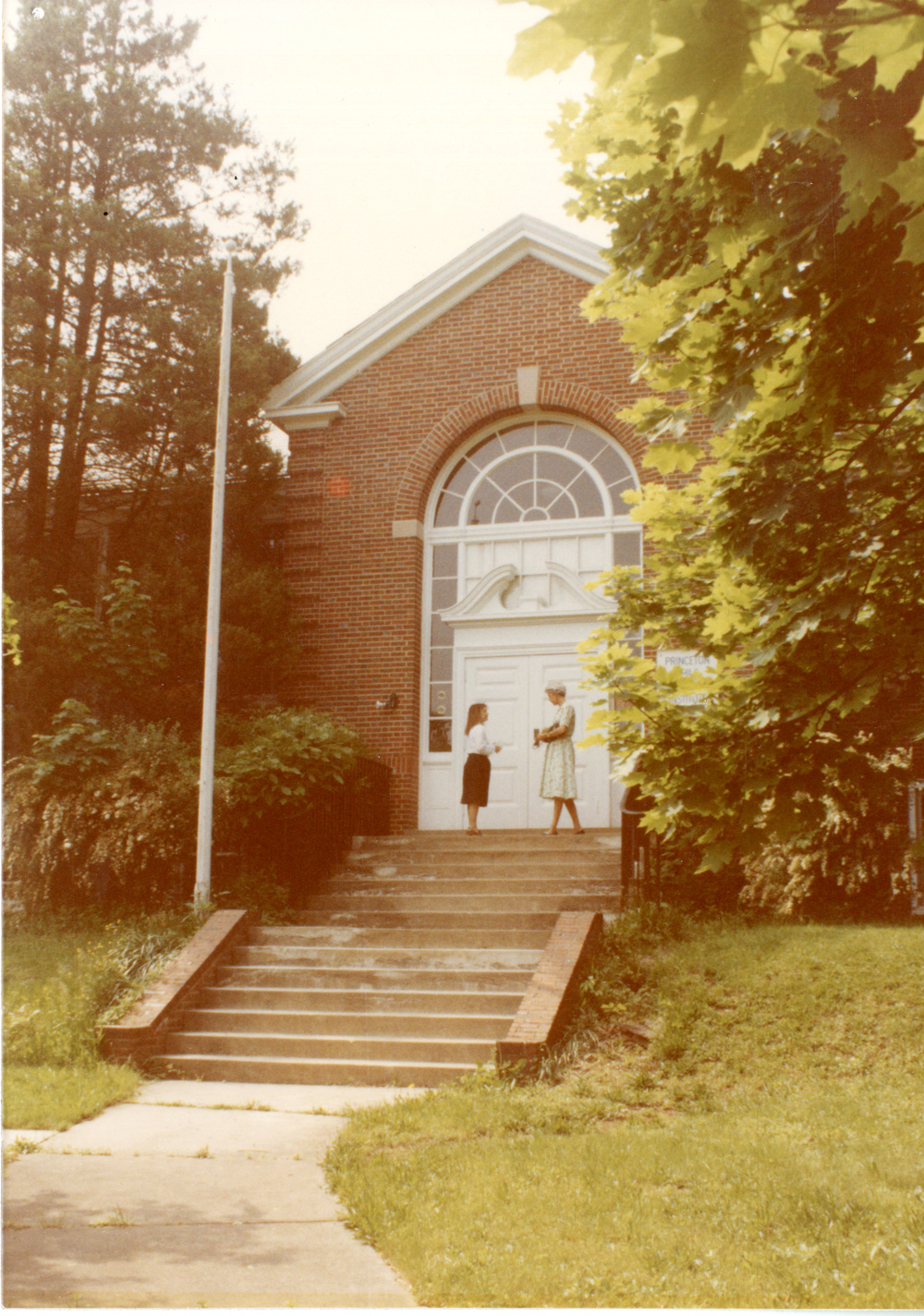Stony Brook School
Township School on Mercer Road
Incorporated 1875. Closed 1936. Reopened from 1945 to 1959.
The earliest mention of a common school at Stony Brook, a historic farming community west of downtown Princeton, appears in the 1848 minutes of the West Windsor Board of Education. A wooden schoolhouse educated up to 45 children each year, drawing students from the surrounding farms and neighboring settlements such as Port Mercer. As wealthy industrialists flocked to Princeton in the late 1800s, the children of staff employed at these grand estates began attending the Stony Brook School as well.
The Stony Brook School’s most renowned teacher was Mary Louise Snook, who taught for forty of the school’s eighty-plus year history. Miss Snook was a formidable yet fondly remembered instructor, who was known to separate boys from girls in classroom seating. One student, in a 1970s oral history interview, recalls her as being “five women in one.”
When the Princeton Township schools consolidated in 1917, Stony Brook opted not to participate and to remain a neighborhood school. The school continued to expand, with a 1904 addition later becoming a second classroom for junior high students. A new brick building replaced the original Stony Brook school in 1929. By 1936, most of the family farms in the area had ceased operation and the Stony Brook School closed due to low enrollment. Princeton Township reopened it as an integrated kindergarten from 1945 to 1959.

Students in front of the Stony Brook schoolhouse with teacher Mary Louise Snook, 1904. Historical Society of Princeton.

1905 photo of Egglesfield family. Drumthwacket Foundation.
The children of Drumthwacket butler Henry Egglefield attended school at Stony Brook. Moses Taylor Pyne, the owner of the Drumthwacket estate, served on the Stony Brook School’s Board of Education.

The Stony Brook School with 1904 cloakroom addition. Historical Society of Princeton.

1929 Stony Brook School building on Route 206. PPS Archives.
Many parents and teachers worried that the original Stony Brook School building (pictured above) sat too close to Route 206. School leaders thus made certain that the new 1929 school building was further set back from the road.